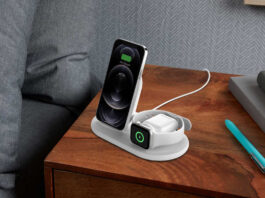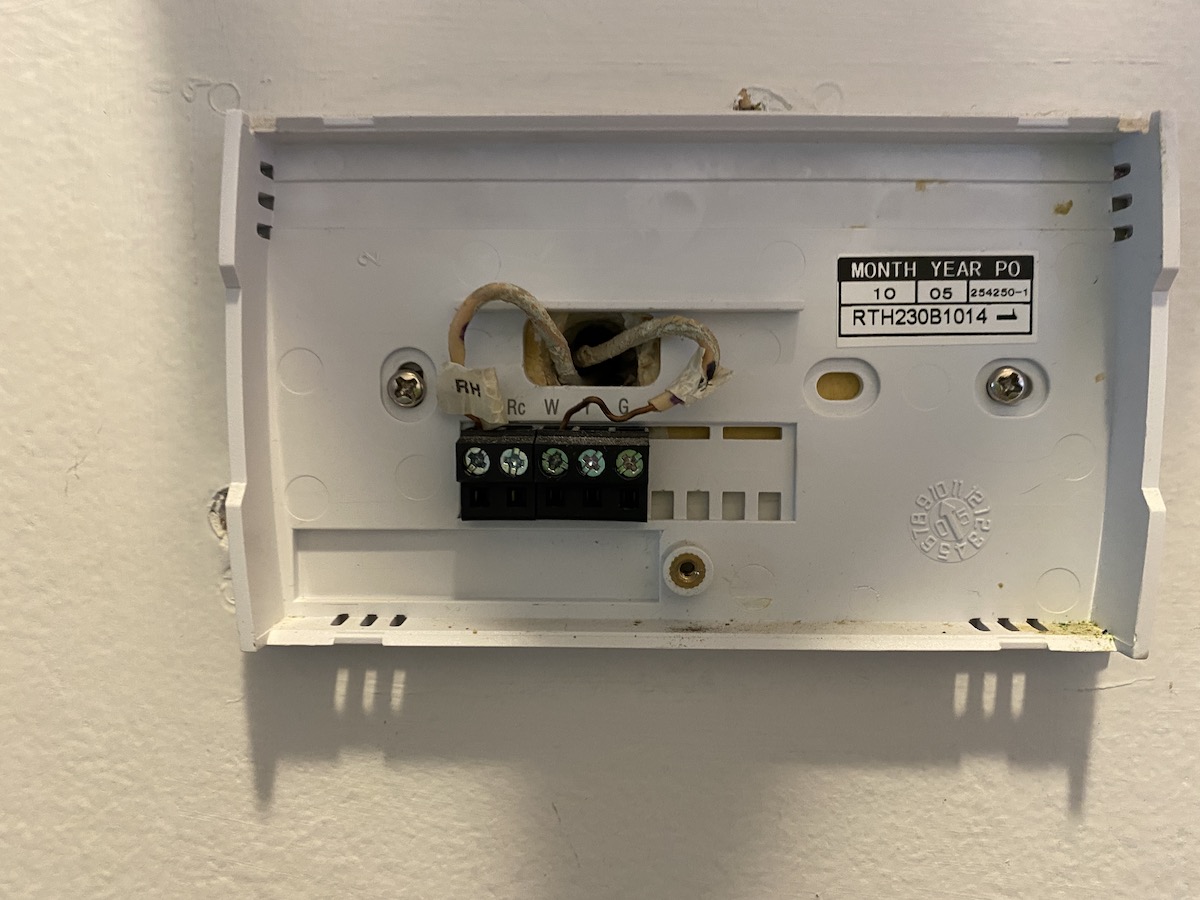 Since 2012, the Nest Learning Thermostat has been making waves in the smart home technology sector. Now owned by Google and onto its third generation, the latest model repeats the earlier successes of its predecessors and adds a few extra features that make the pricey thermostat worthwhile. Here is everything you need to know about the third generation Nest Learning Thermostat.
Since 2012, the Nest Learning Thermostat has been making waves in the smart home technology sector. Now owned by Google and onto its third generation, the latest model repeats the earlier successes of its predecessors and adds a few extra features that make the pricey thermostat worthwhile. Here is everything you need to know about the third generation Nest Learning Thermostat.
Nest thermostat: what’s in the box
When you get the Nest Learning Thermostat, you get the thermostat unit, which is a sexy looking circular faceplate with the brains inside, plus the base where your wires will go into. There’s a couple of options for wall mounting it, and screws and a screwdriver are included.
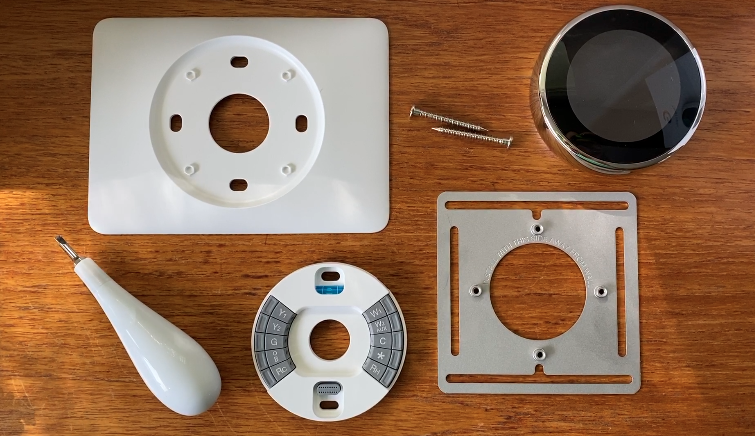
Installing the Nest thermostat
Let me start off by saying I’ve tried to install plenty of smart thermostats into my home. I’ve only had success with one: this one. My home and my furnace are older and use a 2-wire connection, which is incompatible with a lot of thermostats. The Nest is the only one I’ve been able to connect.
If you follow the instructions in the Nest App, the installation is truly easy; essentially all you need to do is take note of where your wires are connected now, and copy that to the Nest base. With your wires connected, just pop the faceplace on and it will boot up. I had this thing installed in about 5 minutes, and I couldn’t be more thrilled.
What Nest learning thermostat promises to do
One of the reasons why the Nest thermostat has become popular is thanks to its Auto-Schedule feature that learns your daily cooling and heating habits and then creates a schedule for you. You’re welcome to make changes if it doesn’t quite get it right of course, but it is perfect for people who want to leave their thermostat on auto without having to tinker with the temperature constantly.
Similarly, you can create your own schedules using the Nest App. If you want to save some energy, set the thermostat to turn down while you’re asleep, then come on shortly before you get up. If you’re going to be away for a week, you can also lower the temperature. The great thing about Nest is that even if you forget to turn the thermostat down before you leave, you can adjust it from anywhere with the app.
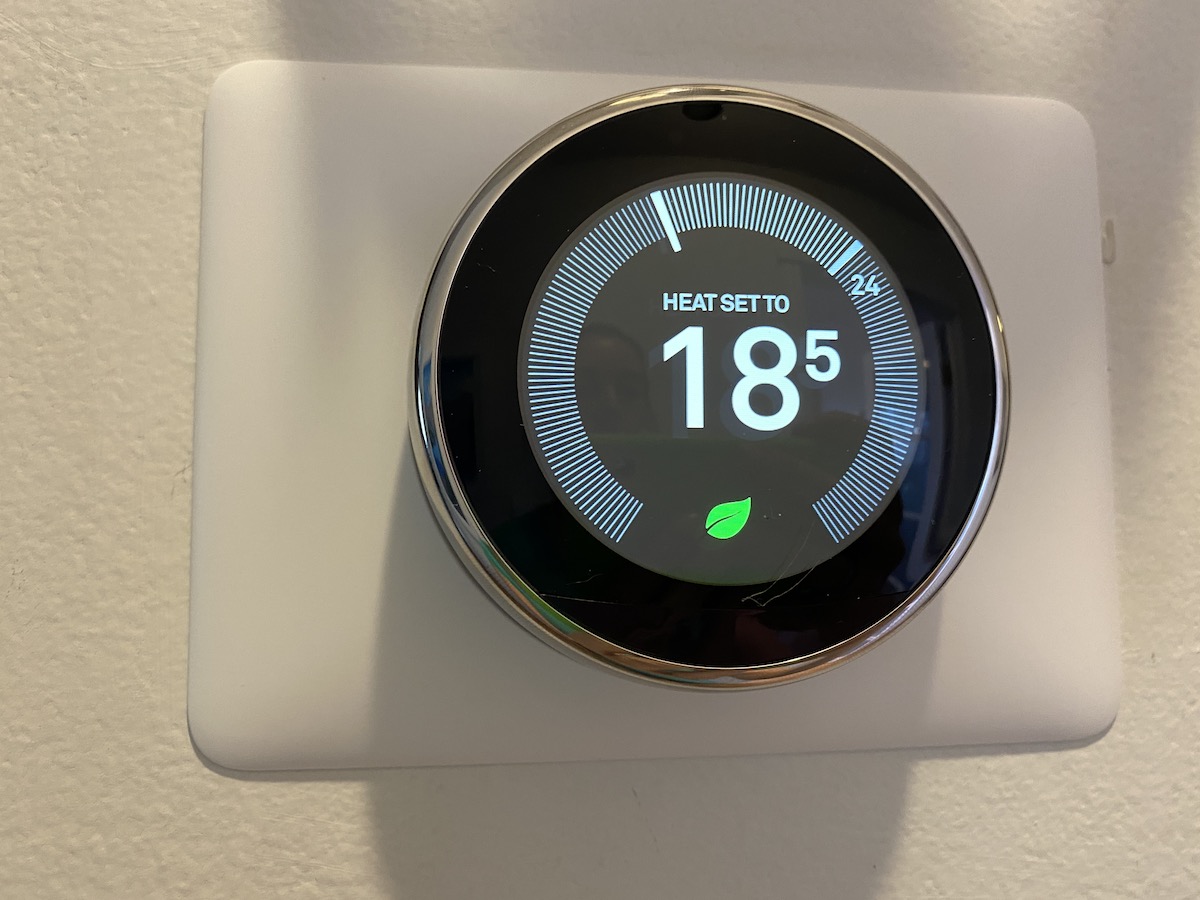 Smart connectivity and voice control
Smart connectivity and voice control
If you have other Nest devices, like the Nest Cam Indoor and Outdoor Security Camera or the Nest Protect Smoke/CO Alarm, the Nest Learning Thermostat can automatically communicate with them. You can issue voice commands to turn the heat or air up or down using either the Google Assistant or Amazon Alexa commands.
Take things a step further if you want. Create a movie watching routine where it turns the heat up a notch, adjusts your smart lights, and turns on the popcorn maker.
How Nest thermostat works: the basics
While you can control every aspect of the Nest Learning Thermostat inside the app, there are also physical on-device controls. You can use the outer ring to adjust the temperature, or change settings too.
As the name indicates, the Nest Learning Thermostat learns about your home and your habits and can help you save energy. In its learning period, it takes note of when you raise or lower the temperature, or when people are home or away. That data is then aggregated to help optimize your energy use, keeping you warm or air conditioned when you need it, and adjusting for lower energy use when you don’t.
What’s the Nest leaf all about?
When you see a green leaf displayed on the device, you will know you are at an energy-saving temperature level. On the Nest device, the screen display can be set to the current or target temperature, the weather, a clock, or be off. You can also keep track of your past energy usage through the Nest Home Report that is sent to you each month.
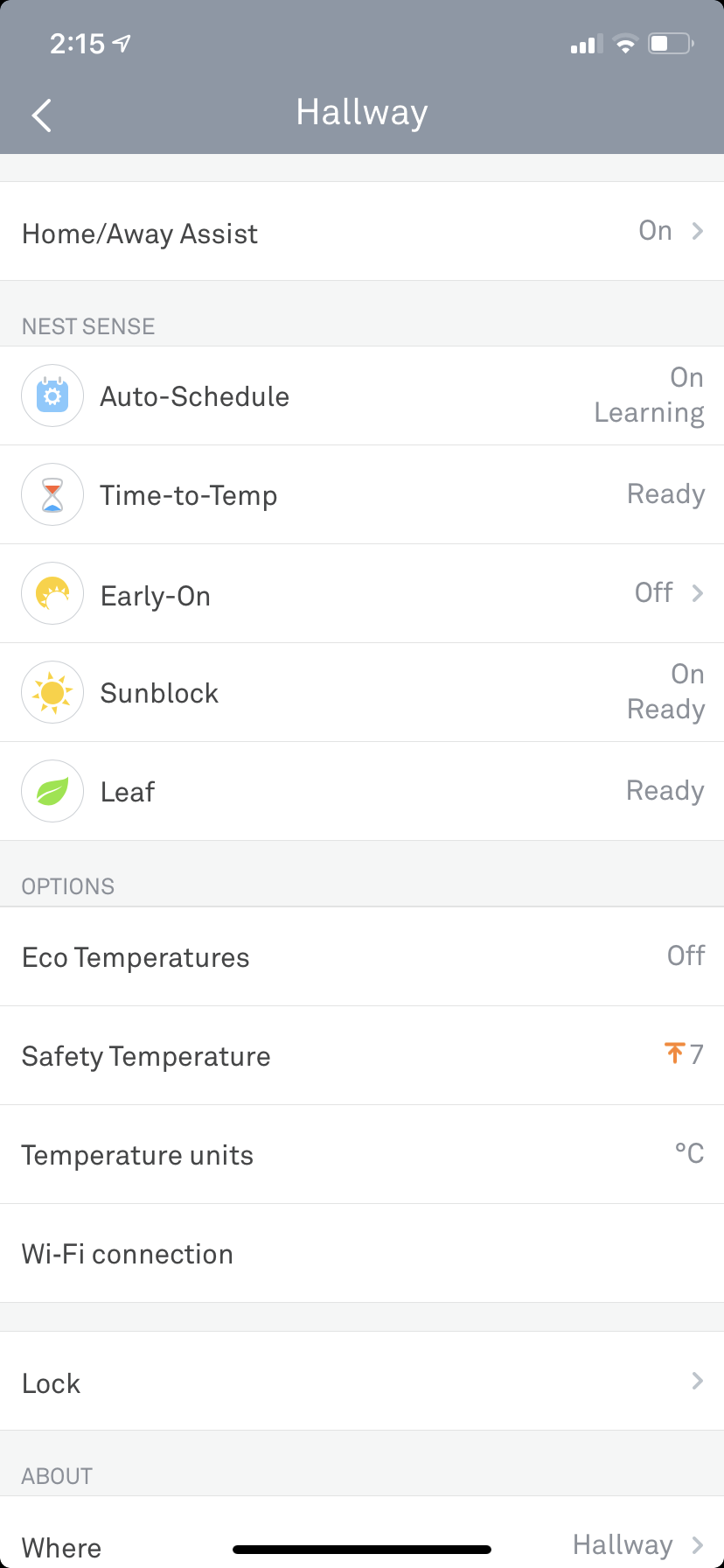 Unique features of Nest learning thermostat
Unique features of Nest learning thermostat
Using Safety Mode to prevent frozen pipes
One of the main reasons I wanted this device is for the Safety Mode feature. As a frequent traveler, I’ve come home twice to a dead furnace in winter. Thankfully that didn’t lead to pipes bursting, but I now know that I probably won’t be so lucky in the future.
Safety Mode will activate the heater even if it’s set to off, before it goes below a pre-set temperature, and this can keep your pipes from freezing.
You’ll get a push notification on your phone or tablet, as well as a message in the Nest App. Once temperatures return to normal levels, another notification will let you know.
Home & Away + Eco Mode
The third generation of the Nest Learning Thermostat is an improvement from previous models.
It’s always had the Home/Away feature, which uses motion sensors to detect whether you are still in the home. If you’re away, it will switch to Eco mode, helping you to conserve energy.
In previous generations, the sensor might not be able to detect you if you’re in other parts of the house, causing the system to switch to Eco Mode automatically while you’re still home. But, this new model uses geofencing to sense if you and your phone are home. Once you leave with the connected phone, it switches to Away Mode.
Furnace Heads-Up
Furnace Heads-Up is a new feature that helps you keep track of your furnace’s power cycles. If there are any abnormalities, the Nest alerts you of the system issues.
Farsight
This feature changes how the device wakes up. In previous models, you had to be directly in front of the device for it to wake up. Now, it will wake up as soon as you enter the room.
 Time-To-Temp
Time-To-Temp
With the Time-to-Temp feature, the Nest Learning Thermostat will tell you how long it will take to get your home to your desired temperature.
Sunblock feature
If your Nest is located in a place that gets a lot of direct sunlight, it won’t interfere any more with the temperature settings. The Nest uses what’s called the Sunblock feature to prevent the system from turning on or off due to the heat from ambient sunlight.
Set Filter Reminders
Filter Reminders can help you keep track of when to change your system’s air filter.
Other thermostats have filter alerts that will remind you at set times: for instance, once a month, every six months, or once a year.
Nest thermostats use how often your system runs to estimate when you need a Filter Reminder. So if you don’t turn cooling on much in the summer, you may go months without a reminder from your Nest thermostat. But if it’s a very cold winter and the heating runs a lot, you may get reminders more often.
Each time you change your system’s air filter, you should reset Filter Reminders so your thermostat will know when to send the next one.
Filter Reminders are not on by default, but you can turn reminders on with the Nest App or the thermostat. By the way, Filter Reminders will appear on your Nest thermostat’s screen, but not in the app.
 How to control Nest with voice
How to control Nest with voice
Nest Learning Thermostat works with your voice assistant whether that’s Google or Alexa. You can say things like “Alexa, what’s the temperature in “thermostat name”?, or “Set thermostat to 19 degrees.” I found the digital assistant compatibility worked very well and made it easy to make adjustments without getting up.
Results: can you see energy savings?
So, what have I noticed after several weeks using the Nest Learning Thermostat in my home? To be honest, not a lot yet. The truth is, this is a long term play for most homeowners. You’re not going to notice dramatic energy savings in a week, or even a month. Over a year, maybe. A couple of years, sure, it will add up. But there are a lot of other reasons a Nest Learning Thermostat is a good idea: the Safety Mode is a biggie. The automatic adjustments and Eco Mode mean you don’t have to micromanage your heating and cooling. Plus, the ability to remotely access the Nest Learning Thermostat is a huge plus.
Overall review: Nest Learning Thermostat
The Nest Learning Thermostat third generation is a small step up from its predecessors. With improvements like geofencing in the Home/Away feature, Safety Mode to keep your family safe, and energy reports, you can monitor the energy consumption of your home more effectively, or let the Nest automatically do its thing!
I found it really easy to set up, and it worked where no other smart thermostat has in my home. It’s easy to use, and it learns your schedule on its own. I can’t really find any downsides to the Nest Learning Thermostat. I imagine some folks will say it’s the price, and they’re probably right. It will take you years before this baby pays for itself. Though if it’s able to warn you once about a potential freeze in the house, for example, it’s probably paid for itself in deductible money already.
In short, I’m very glad to have a Nest Learning Thermostat in my home. It feels like a solid insurance policy, and one that should pay dividends in the long run. I’ll have to report back in a year or two.
Shop the Nest Learning Thermostat at Best Buy
Table of Contents





